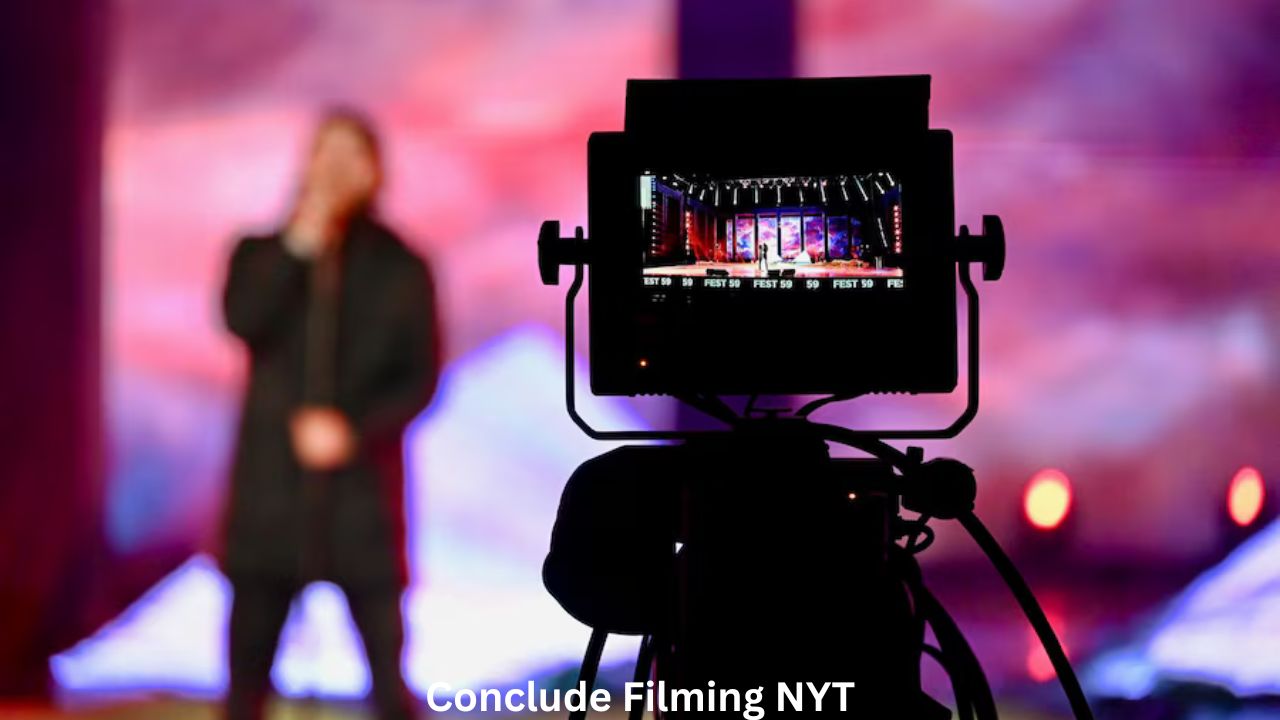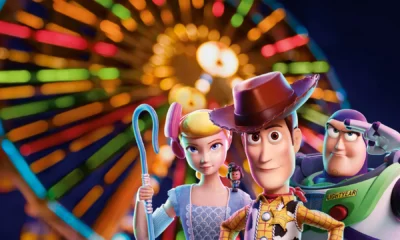Streaming
Nonfiction Films with an Editorial Viewpoint: Exploring a Subjective Lens

Nonfiction films, often celebrated for their ability to depict reality, are not always as objective as they might seem. Increasingly, these films are taking on editorial viewpoints that shape how audiences perceive the world. This article explores the nature of nonfiction films with an editorial viewpoint, examining their impact, the techniques used, and the ethical considerations involved.
The Nature of Editorial Viewpoints in Nonfiction Films
Nonfiction films, unlike their fictional counterparts, aim to present reality, but the way they do so can significantly influence viewers’ perceptions. An editorial viewpoint involves a subjective angle that can shape the narrative and interpretation of the film’s subject. This perspective can be influenced by the filmmaker’s personal beliefs, societal biases, or political agendas. Unlike purely objective documentaries, these films make a conscious choice to advocate for a specific perspective or argument.
Editorial viewpoints in nonfiction films can manifest in various forms, from the choice of subjects and narrative structure to the use of music, voice-over, and visual style. For instance, a documentary focusing on environmental issues might emphasize the dire consequences of climate change to advocate for urgent action. Such a film would likely present data and personal stories in a way that underscores its central argument, thus guiding the audience toward a particular understanding.
Techniques Employed in Editorial Nonfiction Films
- Selective Storytelling: Filmmakers with an editorial viewpoint often employ selective storytelling, highlighting certain facts or perspectives while downplaying others. This technique can effectively shape the narrative and emphasize specific aspects of the subject matter.
- Emotional Appeal: By using emotionally charged images, music, and personal anecdotes, filmmakers can create a strong connection with the audience. This approach not only draws viewers in but also reinforces the film’s editorial stance.
- Expert Opinions: Including interviews with experts or authorities on the subject can lend credibility to the film’s viewpoint. However, the selection of experts and the framing of their contributions can also reflect the filmmaker’s perspective.
- Visual and Audio Techniques: The use of visual and audio techniques, such as dramatic lighting, slow-motion sequences, and evocative soundtracks, can enhance the film’s emotional impact and underscore its editorial message.
- Narrative Framing: The way a story is framed can influence how it is perceived. A documentary that frames a social issue as a crisis, for example, can instill a sense of urgency and motivate viewers to take action.
Notable Examples of Editorial Nonfiction Films
- “The Thin Blue Line” (1988): Directed by Errol Morris, this film examines the case of Randall Dale Adams, a man wrongfully convicted of murder. Morris’s use of interviews, reenactments, and a haunting score creates a compelling narrative that challenges the justice system and argues for Adams’s innocence.
- “An Inconvenient Truth” (2006): Al Gore’s documentary on climate change is a prime example of an editorial nonfiction film. By presenting scientific data alongside personal testimonies and urgent calls to action, the film advocates for environmental reform and emphasizes the severity of global warming.
- “13th” (2016): Ava DuVernay’s exploration of the U.S. prison system and its connection to racial inequality utilizes archival footage, expert interviews, and a powerful narrative to argue for criminal justice reform. The film’s perspective is evident in its focus on systemic racism and its critique of mass incarceration.
- “The Fog of War” (2003): Another film by Errol Morris, this one focuses on Robert S. McNamara, a former U.S. Secretary of Defense. Through interviews and historical footage, the film provides a critical look at McNamara’s role in the Vietnam War and explores the complexities of war and decision-making.
The Impact of Editorial Nonfiction Films
Editorial nonfiction films have a significant impact on public discourse and individual perceptions. By presenting information through a specific lens, these films can influence viewers’ opinions and inspire action on social, political, or environmental issues. They often serve as catalysts for discussion and debate, challenging audiences to reconsider their views and take a stand on important issues.
Moreover, these films can contribute to shaping historical narratives and public memory. For example, a documentary that highlights certain aspects of a historical event while neglecting others can affect how that event is remembered and understood.
Ethical Considerations
The editorial nature of some nonfiction films raises important ethical questions. Filmmakers have a responsibility to present information honestly and transparently, even when advocating for a particular viewpoint. This involves acknowledging biases, providing context, and avoiding manipulation of facts or emotions.
- Transparency: Filmmakers should be transparent about their perspective and the choices they make in presenting information. This helps viewers understand the film’s context and evaluate its arguments critically.
- Balance: While an editorial viewpoint is inherent in many nonfiction films, striving for balance and fairness is crucial. Presenting multiple perspectives and acknowledging counterarguments can enhance the film’s credibility and foster a more nuanced understanding.
- Integrity: Maintaining integrity involves avoiding distortion of facts and ensuring that the film’s portrayal of reality is as accurate as possible. This is particularly important when addressing sensitive or controversial issues.
The Future of Editorial Nonfiction Films
As the landscape of media consumption evolves, nonfiction films with editorial viewpoints are likely to continue playing a prominent role. Consequently, advances in technology and changes in viewing habits are expanding the ways in which these films are produced and distributed. For instance, streaming platforms, social media, and interactive formats are providing new opportunities for filmmakers to reach audiences and engage them in meaningful ways. Consequently, these innovations are transforming how editorial nonfiction films are created and shared, allowing for greater flexibility and impact in their storytelling.
In this dynamic environment, the challenge for filmmakers will be to balance their editorial perspectives with a commitment to truth and ethical storytelling. By navigating this balance thoughtfully, nonfiction films can continue to inform, provoke, and inspire audiences while contributing to important social and cultural conversations.
Conclusion
Nonfiction films with an editorial viewpoint offer a rich and complex way of engaging with reality. Through selective storytelling, emotional appeal, and various cinematic techniques, these films shape how audiences perceive and understand the world. While they play a crucial role in sparking discussion and driving change, they also raise important ethical considerations about truth, transparency, and responsibility. As the medium evolves, it will be essential for filmmakers to navigate these challenges with integrity, ensuring that their work continues to inform and inspire in meaningful ways.
Film
The Iconic Legacy of The Departed Film Poster

The Departed film poster remains one of the most iconic visuals in cinema. Its captivating design perfectly reflects the gritty tone of Martin Scorsese’s masterpiece. Every detail serves a purpose, echoing the film’s themes of betrayal, duality, and deception. The poster not only attracts viewers but also delivers a visual preview of the psychological drama awaiting them. The Iconic Legacy of The Departed Film Poster.
The Artistic Composition of The Departed Film Poster
The poster balances minimalist design with impactful imagery. Key characters, including Leonardo DiCaprio and Matt Damon, dominate the layout. Their intense expressions draw viewers into the story’s tension. The stark color palette, featuring muted tones of gray, black, and crimson, mirrors the movie’s dark undertones.
Typography plays a crucial role in the design. The bold font used for the title conveys seriousness and urgency. The grungy texture of the text enhances the mood, suggesting turmoil and chaos. Each element has been deliberately chosen to resonate with the film’s central themes.
The Symbolism in Color Choices
Color plays a powerful role in The Departed film poster. The heavy use of dark tones emphasizes secrecy and betrayal. Red, a recurring color, symbolizes violence and danger. The interplay of black and white reflects the moral ambiguity of the characters. These subtle cues provide insight into the narrative, intriguing audiences even before the film begins.
Character Positioning and Its Psychological Impact
The placement of characters within The Departed film poster tells a story in itself. Leonardo DiCaprio’s character appears front and center, conveying vulnerability and inner conflict. Matt Damon, positioned slightly to the side, exudes authority and control. Jack Nicholson’s menacing presence looms subtly, suggesting his dominant role in the story’s events.
This calculated arrangement of characters conveys a visual hierarchy. It creates a sense of tension and reflects the intricate power dynamics in the film.
Typography: A Subtle Narrative Tool
The typeface used in The Departed film poster is bold and distressed. This texture complements the film’s raw intensity and chaotic plot. The placement of the title near the center ensures immediate attention. Small details, like the rugged edges of the letters, enhance the sense of imperfection and unrest.
Typography often gets overlooked in poster analysis, but here, it plays a critical role in storytelling. This balance between simplicity and depth demonstrates the designer’s expertise.
How The Departed Film Poster Appeals to Emotion
Emotion is a driving force behind the effectiveness of The Departed film poster. It immediately creates a sense of foreboding and intrigue. The intense gazes of the characters establish an emotional connection with potential viewers. These elements work together to build anticipation and invite audiences into the film’s world.
Marketing Mastery: Selling the Drama
Film posters often act as the first point of contact between the movie and its audience. The Departed film poster captures attention while conveying the story’s essence. Its layered design elements reflect a blend of action, drama, and psychological conflict. This combination ensures broad appeal across diverse audience groups.
The Influence of Martin Scorsese’s Vision
Martin Scorsese’s creative influence extends beyond directing the film. His preference for moody atmospheres and complex characters shaped the poster’s aesthetic. Scorsese’s name alone adds weight to the marketing materials. Including his name prominently on the poster immediately attracts fans of his earlier works.
The Historical Context of The Departed Film Poster
Released in 2006, The Departed came during a resurgence of interest in crime dramas. The poster reflects the zeitgeist of the mid-2000s, where gritty realism dominated pop culture. It draws inspiration from earlier noir films, blending classic design principles with modern techniques.
Why Simplicity in Design Works Best
Simplicity often leaves the most profound impact, as demonstrated by The Departed film poster. Its uncluttered design ensures viewers focus on the core message. The balance of minimalism with striking details proves that less can indeed be more.
How the Poster Builds Mystery
Mystery forms an integral part of The Departed film poster’s success. The characters’ ambiguous expressions encourage viewers to ask questions. What conflicts drive these men? How do their stories intersect? By leaving certain details unrevealed, the poster compels audiences to seek answers by watching the film.
The Role of Lighting in Visual Storytelling
Lighting techniques used in The Departed film poster highlight the tension in the story. Shadows play across the characters’ faces, reflecting their hidden motives. The interplay of light and dark mirrors the film’s exploration of moral duality.
Cultural Impact of The Departed Film Poster
Beyond promoting the film, The Departed film poster has become a cultural symbol. Fans often use it as a reference for gritty, character-driven storytelling. The imagery has been replicated, parodied, and celebrated in various forms of media.
Lessons for Modern Poster Design
Modern designers can learn valuable lessons from The Departed film poster. Its balance of simplicity, symbolism, and emotional appeal serves as a template for effective marketing. By focusing on the essence of the story, it creates a lasting impression.
FAQs
What makes The Departed film poster unique?
The poster’s unique blend of minimalism, symbolism, and emotional depth sets it apart from other movie marketing materials.
How does The Departed film poster reflect the movie’s themes?
It uses color, typography, and character placement to mirror themes like betrayal, duality, and moral ambiguity.
Why is color important in The Departed film poster?
Color choices like red and black emphasize violence, secrecy, and danger, reflecting the film’s dark narrative.
Who influenced the design of The Departed film poster?
Martin Scorsese’s preference for moody atmospheres and complex characters heavily influenced the poster’s aesthetic.
How does The Departed film poster appeal to audiences?
It intrigues viewers with its mysterious imagery, emotional intensity, and hints of the dramatic conflicts within the story.
Why is typography significant in The Departed film poster?
The bold, distressed font enhances the film’s gritty tone and reflects the chaotic nature of the plot.
Conclusion
The Departed film poster exemplifies the power of well-executed design. Its calculated use of color, character positioning, and typography conveys the essence of the film. By blending artistic techniques with storytelling, it sets a high standard for cinematic marketing. For audiences, it provides an unforgettable visual introduction to one of modern cinema’s greatest crime dramas.
Streaming
House of 1000 Corpses 20th Anniversary Film Showtimes: Celebrating Two Decades of Horror

House of 1000 Corpses 20th Anniversary Film Showtimes. The legendary cult classic “House of 1000 Corpses” celebrates its 20th anniversary, and fans are in for a special treat! This year marks two decades since Rob Zombie’s iconic horror masterpiece first horrified audiences with its twisted story and unforgettable characters. To commemorate the occasion, theaters across the nation are hosting special showtimes to celebrate the House of 1000 Corpses 20th anniversary. These screenings promise a unique experience with exclusive behind-the-scenes content, fan events, and, of course, the terrifying Firefly family. So, let’s dive into everything you need to know about this thrilling celebration and why horror fans are buzzing with excitement.
The Return of a Cult Classic: What Makes House of 1000 Corpses So Iconic?
To truly appreciate the excitement surrounding the House of 1000 Corpses 20th anniversary film showtimes, we need to understand what makes this film a horror staple. Released in 2003, Rob Zombie’s directorial debut introduced audiences to a world filled with sadistic killers, nightmarish visuals, and an atmosphere thick with dread. But what truly sets it apart is its ability to blend horror, dark humor, and shock value in a way that leaves audiences both terrified and strangely fascinated.
The film’s impact goes beyond just scares; it challenges viewers’ perceptions of morality and the grotesque. From its bizarre set pieces to the unforgettable characters, “House of 1000 Corpses” cemented itself as a cult classic almost immediately upon release. And now, two decades later, it continues to captivate new audiences with its raw, unapologetic take on the horror genre.
Why Are Fans Eagerly Awaiting the 20th Anniversary Showtimes?
Many horror enthusiasts have been eagerly counting down to the 20th anniversary of “House of 1000 Corpses”. But why exactly are fans so excited for these showtimes? For some, it’s the perfect chance to relive the terror that gripped them two decades ago. For others, it’s an opportunity to experience the film on the big screen for the very first time. These anniversary screenings aren’t just your typical reruns—they feature remastered visuals, enhanced audio, and additional content that will surely thrill die-hard fans and newcomers alike.
But that’s not all! The anticipation surrounding these showtimes isn’t just about nostalgia. It’s also about celebrating Rob Zombie’s influence on horror cinema. His unique directorial style has left an indelible mark on the genre, making this event a fitting tribute to his career.
Special Showings and Themed Events Across Theaters Nationwide
As part of the celebration, select theaters are showcasing “House of 1000 Corpses” in special limited-time screenings. These events include midnight showings, horror-themed marathons, and even interactive experiences where fans can fully immerse themselves in the film’s world. Fans who attend these screenings can expect a heightened atmosphere, with audiences dressing up as their favorite characters, quoting lines, and sharing their love for this cult classic.
Moreover, fans who are lucky enough to attend these anniversary events might also receive exclusive merchandise. From collectible posters to themed apparel, these items offer fans a chance to take home a piece of the film’s legacy. However, quantities are limited, so fans are encouraged to arrive early to grab their favorite collectibles before they sell out.
What New Content Can Fans Expect During the Anniversary Showtimes?
The House of 1000 Corpses 20th anniversary film showtimes promise more than just a standard re-release. Fans will enjoy never-before-seen content, including behind-the-scenes footage, interviews with Rob Zombie, and reflections from the cast. This exclusive content will provide insights into the making of the film, revealing the challenges, inspirations, and creative decisions that went into its production.
Die-hard fans will appreciate the opportunity to learn about the film’s backstory, especially since “House of 1000 Corpses” faced significant hurdles during its original release. From production delays to studio conflicts, the film’s journey to becoming a cult classic was anything but smooth. These insights add an extra layer of appreciation for the film’s enduring success.
The Unforgettable Characters: Revisiting the Firefly Family’s Madness
At the heart of “House of 1000 Corpses” lies the sinister Firefly family, a group of sadistic killers whose demented antics have become iconic in horror cinema. Characters like Captain Spaulding, Otis Driftwood, and Baby Firefly are etched into the memories of horror fans worldwide. Their twisted sense of humor, chilling unpredictability, and gruesome violence set the film apart from others in the genre.
The House of 1000 Corpses 20th anniversary film showtimes offer a chance to revisit these characters on the big screen, where their presence feels even more terrifying. Fans can once again experience the madness, screams, and chaos that made the Firefly family infamous. For newcomers, it’s an opportunity to see why these characters have remained beloved—and feared—for two decades.
Rob Zombie’s Impact on the Horror Genre
The anniversary screenings aren’t just a celebration of the film; they are also a testament to Rob Zombie’s influence on horror. As a director, Zombie’s style stands out for its gritty visuals, intense soundscapes, and an unapologetically dark tone. “House of 1000 Corpses” paved the way for his future projects, including “The Devil’s Rejects” and “3 From Hell”, which further expanded the Firefly family’s story.
Rob Zombie’s impact goes beyond filmmaking. His work has influenced everything from horror-themed music videos to Halloween attractions. The film’s legacy continues to inspire a new generation of horror creators, keeping the genre alive and thriving.
How to Secure Tickets for the Anniversary Screenings
Given the buzz around the anniversary, tickets for the House of 1000 Corpses 20th anniversary film showtimes are selling quickly. Fans interested in attending should act fast. Pre-sale tickets have already been made available, with many theaters reporting nearly sold-out showtimes. For the best chance of securing a seat, check local theater listings, sign up for email alerts, and follow updates on social media channels.
If you miss out on in-person screenings, don’t worry. Some theaters may offer digital streaming options, allowing fans to celebrate the anniversary from the comfort of their homes.
What’s Next for Rob Zombie and the Firefly Family?
With the excitement surrounding the House of 1000 Corpses 20th anniversary film showtimes, fans can’t help but wonder what Rob Zombie has planned next. Will there be another addition to the Firefly family saga? Or perhaps a brand-new project that dives even deeper into the twisted realms of horror?
While Zombie has kept future plans under wraps, fans remain hopeful. The success of this anniversary event could potentially inspire him to revisit this beloved universe or introduce new characters that push the boundaries of horror even further.
Frequently Asked Questions
How long will the anniversary screenings for House of 1000 Corpses be available?
These screenings are limited-time events, so check local listings for specific dates and times.
Will the anniversary showtimes include new content?
Yes, fans can expect behind-the-scenes footage, interviews, and exclusive content during the screenings.
Is there any chance of additional anniversary merchandise becoming available online?
Some limited-edition merchandise may become available online, but quantities are extremely limited.
Can fans stream the film if they can’t attend the screenings in person?
Certain theaters may offer streaming options for those unable to attend in person, so stay tuned for updates.
Will Rob Zombie make any live appearances during the anniversary events?
In select cities, Rob Zombie may participate in Q&A sessions or fan events. Check theater schedules for details.
How can I stay updated on Rob Zombie’s upcoming projects?
Follow Rob Zombie on social media and subscribe to his official website for news on future releases.
Streaming
Conclude Filming NYT: Behind the Scenes of the Final Production Stages

Filmmaking represents an intense and creative journey, filled with challenges, rewards, and a tireless dedication to craft. When productions conclude filming for NYT (New York Times), directors, producers, and the entire crew take critical steps to bring a project to its final phase. These wrap-up stages mark the culmination of months, if not years, of effort, teamwork, and visionary storytelling. Today, we will uncover what it means to conclude filming for NYT, focusing on these intricate final steps, and examining how filmmakers and crews bring a production to a close with excellence.
The Process of Concluding Filming for NYT
To conclude filming for NYT projects, crews follow a well-coordinated process that ensures each detail meets high production standards. From wrapping up shooting schedules to organizing final scenes, every step matters. The director and producers hold regular meetings to confirm that each scene aligns with the story’s vision. They coordinate with departments like lighting, costume, and set design to ensure scenes maintain visual continuity. After the last scene wraps, the director typically calls for an official end-of-shoot announcement. This significant moment symbolizes the end of active filming and marks the beginning of post-production.
Why Concluding Filming Requires Meticulous Planning
Filmmakers need careful planning to conclude filming because it ensures they capture each scene to its fullest potential. Each member of the crew plays a part in coordinating efforts to finalize every shot and meet the high standards that NYT expects. For example, the director reviews daily footage (also called dailies) with the cinematographer to catch any shots that might need re-shooting. Filmmakers rarely leave anything to chance, which guarantees that the team captures every aspect of the storyline before wrapping up.
Setting Up the Final Shot
The final shot on set serves as a climactic and crucial moment for any film production. When NYT projects prepare for this shot, the energy on set becomes both intense and celebratory. Directors pay extra attention to lighting, angles, and props for the concluding scene, often with a focus on capturing the film’s most important message or emotion. Many directors consider this shot their “grand finale,” one that brings the story’s essence to life. As a result, actors and crew often feel an emotional connection to the final shot, as it represents the culmination of all their hard work and commitment.
Breaking Down the Set
After the final shot, crew members begin the set breakdown process, an essential part of concluding filming. They carefully disassemble props, lighting rigs, and set pieces to clear the production space. In many cases, the team restores the location to its original condition, especially when filming on-location. For larger NYT productions, they may hold a small ceremony or end-of-shoot celebration to honor everyone’s contributions. This marks the official conclusion of filming, allowing everyone to reflect on the journey they have shared.
The Emotional Farewell to Cast and Crew
Concluding filming also brings emotional farewells, as cast and crew have often built strong relationships during production. This moment allows everyone to celebrate achievements and reminisce about shared challenges, successes, and memorable scenes. Directors and producers may offer special acknowledgments or awards for standout performances or contributions. These ceremonies help close this chapter, and the team moves on to future projects. However, many hold on to friendships, and some even collaborate again in future NYT productions.
Moving into Post-Production: The Next Phase
Once NYT productions conclude filming, post-production teams take over. Post-production involves editing, sound design, color grading, and adding special effects if necessary. Editors, sound engineers, and visual effects artists work closely with directors to bring the footage to life. This phase requires just as much coordination as filming, with each professional ensuring the story flows seamlessly from scene to scene. Post-production teams typically work with tight deadlines, knowing that the film’s success relies heavily on their precision and attention to detail.
Why Concluding Filming for NYT Demands Dedication
Concluding filming requires dedication and the cooperation of every team member, as it represents the final push toward completion. Directors must ensure they capture every crucial scene, and actors need to give their best performances until the very last moment. The production crew continues working tirelessly, focusing on the technical aspects of each shot. Many people see this phase as the most rewarding, knowing that they are close to presenting a finished work to audiences. Their hard work throughout the process shines through in every frame.
Archiving and Storing Footage
After completing filming, NYT productions archive and store footage meticulously to prevent loss or damage. Production companies maintain organized databases that catalog each piece of raw footage, organized by scene, actor, and location. Proper archiving remains essential for post-production and future marketing efforts. NYT’s archival team checks footage integrity and uses high-quality storage solutions to protect the final product. This step ensures that the film’s visual history stays intact, ready for editing, and potential future use in sequels or spinoffs.
Releasing the Film: Promoting the Final Product
The final stage involves promoting the film, preparing it for distribution, and creating excitement among audiences. NYT productions use various marketing strategies, including teaser trailers, press releases, and interviews with cast members. Promotional efforts start well before the final film release, helping build anticipation and set expectations. Production teams also organize premieres, where they invite media, critics, and sometimes fans to view the film ahead of its official release. These events create buzz and draw attention to the hard work that went into the production.
Challenges When Concluding Filming for NYT
Even with meticulous planning, concluding filming often brings unforeseen challenges. Production teams sometimes discover missed shots, continuity issues, or unexpected location limitations. Directors must stay adaptable, quickly assessing solutions to these problems without sacrificing the story’s integrity. Some productions face tight budgets or time constraints that add pressure during the final days. However, directors and producers know that overcoming these obstacles strengthens the film and showcases their dedication to excellence.
Reflecting on the Journey: The Filming Wrap-Up
As production teams wrap up filming, they often take a moment to reflect on the journey. Each person involved has likely faced countless hours on set, late nights, and creative challenges. Concluding filming gives everyone an opportunity to look back at their shared accomplishments. For many, this moment represents both relief and pride as they prepare to share their work with the world. Directors, cast, and crew celebrate the final product, knowing it will soon impact audiences far beyond the confines of the set.
Why NYT Productions Stand Out in Filmmaking
NYT’s commitment to high-quality storytelling and powerful visuals makes its productions stand out. They assemble skilled teams of professionals who share a passion for impactful narratives. With a focus on stories that resonate with audiences, NYT projects often challenge viewers’ perceptions and invite deeper thought. Every production reflects a dedication to quality, creativity, and authenticity that goes beyond standard filmmaking practices.
Final Words on Concluding Filming for NYT
Concluding filming for NYT productions represents an essential milestone in the creative journey. Each step in the process requires commitment, expertise, and careful coordination to bring the vision to life. The final stages—from the last shot to the set breakdown—reflect the hard work of everyone involved. As the film moves into post-production, every team member celebrates their contribution to the story. The result is a production that not only entertains but also inspires audiences, representing the high standards and storytelling excellence that define NYT.
FAQs
How long does it take to conclude filming for an NYT production?
Concluding filming depends on the project size, but it can take a few weeks to several months.
What happens after NYT productions finish filming?
After filming, the project moves into post-production, where teams edit and add sound, effects, and color grading.
Why do production teams celebrate after concluding filming?
These celebrations honor the hard work of cast and crew, allowing them to commemorate their shared journey.
How do NYT productions handle final scene shoots?
NYT productions focus on perfecting each detail in the final scene, ensuring that it captures the essence of the story.
What makes NYT productions unique in the film industry?
NYT productions stand out for their commitment to high-quality storytelling, authenticity, and visual artistry.
What is the role of archiving in concluding filming?
Archiving preserves the raw footage, ensuring its integrity for post-production and future use in marketing or sequels.
-

 Film Streaming9 months ago
Film Streaming9 months agoStreaming Film VF: Your Gateway to French Cinema
-

 Film11 months ago
Film11 months agoUnveiling the Magic: Exploring the Art of Film Techniques
-

 Film9 months ago
Film9 months agodG9ERgG-deadpool-2
-

 Film Streaming10 months ago
Film Streaming10 months agoFilm Streaming vs Cinema Experience: Which Offers a Better Movie Viewing Experience?
-

 Film Streaming9 months ago
Film Streaming9 months agosuicide squad streaming
-

 Film Streaming9 months ago
Film Streaming9 months agoles animaux fantastiques 2 streaming
-

 Film Streaming9 months ago
Film Streaming9 months agoFilm VF Streaming: Your Gateway to French Cinema
-

 Film Streaming9 months ago
Film Streaming9 months agoToy Story 4 streaming
